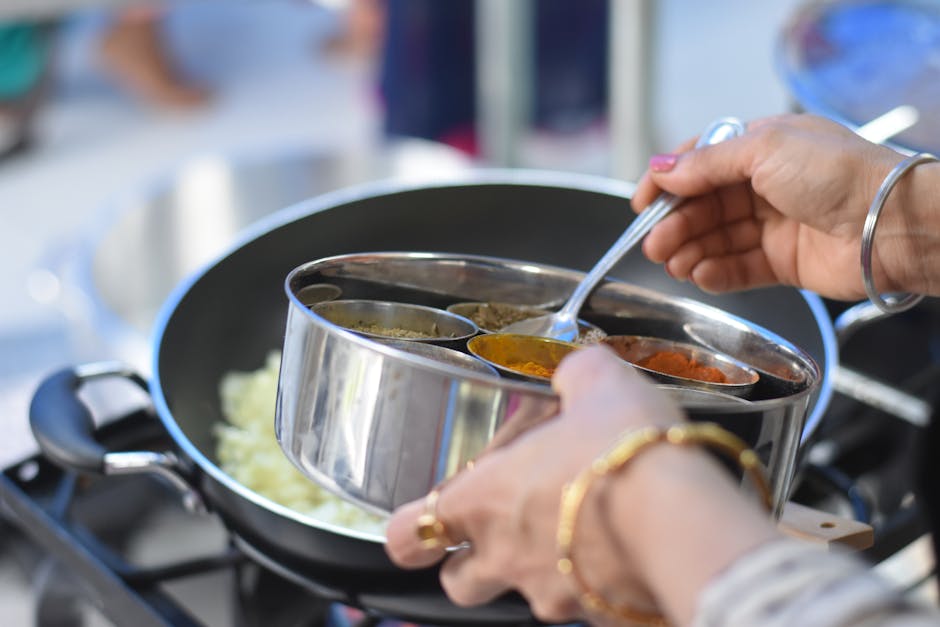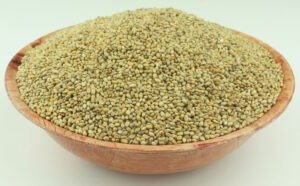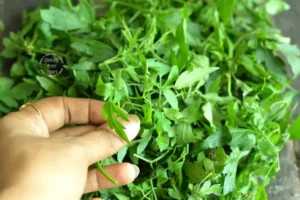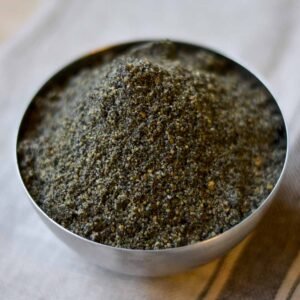Introduction to South Indian Cooking
South Indian cooking is known for its vibrant flavors and aromatic spices. In South Indian cuisine, rice is a staple and is often accompanied by dishes such as sambar and rasam. Coconut, curry leaves, and mustard seeds are commonly used ingredients that give the dishes their unique taste. The cuisine also incorporates a variety of lentils and vegetables, making it not just flavorful but also nutritious. The use of tamarind adds a tangy kick to many dishes, while the liberal use of chillies adds a spicy element. Each region in South India has its own culinary specialties, showcasing the diverse range of flavors and cooking techniques in the region.
Exploring Exotic Indian Spices
Indian spices are a crucial part of South Indian cooking, adding flavor and personality to dishes. Here are a few exotic Indian spices that can elevate your culinary creations:
- Cardamom: Known for its fragrant and slightly sweet taste, cardamom is often used in both sweet and savory dishes.
- Turmeric: A vibrant yellow spice with earthy flavors, turmeric is not only used for its color but also its health benefits.
- Cumin: Providing a warm and nutty flavor, cumin seeds are a staple in Indian cuisine, especially in spice blends like garam masala.
- Mustard Seeds: Adding a pop of flavor and crunch, mustard seeds are commonly used for tempering dishes.
- Curry Leaves: These aromatic leaves are used to add a unique citrusy and slightly nutty flavor to many South Indian dishes.
Experimenting with these exotic Indian spices can help you unlock a whole new world of flavors in your cooking!
Traditional South Indian Dishes
Traditional South Indian dishes are known for their rich flavors and aromatic spices. Some popular dishes include dosa, idli, sambar, and rasam. These dishes use a variety of spices like mustard seeds, curry leaves, and turmeric to create unique and delicious flavors. South Indian cuisine often incorporates coconut, which adds a creamy texture and a hint of sweetness to many dishes. Rice and lentils are staple ingredients in South Indian cooking and are used to make a wide variety of dishes, from savory pancakes to hearty stews. If you want to master the art of South Indian cooking, be sure to familiarize yourself with these traditional dishes and the spices that make them so special.
Importance of Spices in South Indian Cuisine
Spices are the heart and soul of South Indian cooking. They are the secret ingredients that bring out the rich flavors and aromas in every dish. In South Indian cuisine, spices are used not just for adding taste but also for their medicinal properties and health benefits. The unique blend of spices creates a symphony of flavors that tantalize the taste buds and make each dish a culinary masterpiece. From the fiery kick of red chili to the earthy warmth of cumin and the citrusy notes of curry leaves, these spices play a crucial role in creating the authentic flavors of South Indian cuisine.
Health Benefits of Indian Spices
Indian spices are not only delicious additions to your dishes but also have various health benefits. Turmeric, commonly used in Indian cuisine, contains a compound called curcumin, known for its powerful anti-inflammatory and antioxidant properties. Cinnamon can help lower blood sugar levels and improve heart health. Cardamom is believed to aid digestion and freshen breath. Moreover, cumin may promote digestion and reduce inflammation in the body. Incorporating these spices into your cooking can not only enhance the taste of your dishes but also bring potential health benefits.
Buying and Storing Exotic Indian Spices
When buying Indian spices, look for freshness and quality. Whole spices generally retain their flavor longer than ground ones. Store them in airtight containers in a cool, dark place to maintain their potency. Ground spices have a shorter shelf life, so buy in small quantities. Check for any exotic spices you may not be familiar with to ensure they are genuine and not adulterated.
Techniques for Cooking with Indian Spices
To maximize the flavors of Indian spices in your cooking, remember to toast them in a dry pan before grinding. This process helps release the spices’ essential oils, enhancing their taste. Be sure to store your spices in a cool, dark place to maintain their freshness and potency. When using whole spices, consider crushing them with a mortar and pestle to release their flavors fully. Experiment with various spice combinations to create unique and delicious dishes.
Recipes Incorporating Exotic Indian Spices
Exotic Indian spices add a unique flavor to South Indian dishes. Common spices like turmeric, cumin, and cardamom are not only flavorful but also offer health benefits. Here are some tasty recipes: Egg curry with turmeric-spiced potatoes, Masala dosa with cumin-flavored potato filling, and Cardamom-infused chai tea. Experimenting with these spices can elevate your cooking to a whole new level of deliciousness!
Enhancing Flavors with Indian Spices
To bring out the best flavors in your South Indian dishes, use a variety of Indian spices. Cumin, coriander, and turmeric are key spices that add depth and richness to your dishes. Experiment with garam masala, a blend of aromatic spices that elevates the taste of your curries. Freshly ground spices will enhance the authenticity of your dishes, making your culinary creations truly unforgettable.
Tips for Mastering South Indian Cooking
To master South Indian cooking, start by familiarizing yourself with common spices like mustard seeds, curry leaves, and turmeric. Experiment with different spice combinations to enhance flavors. Grind your own spices for optimal freshness and taste. Practice traditional South Indian recipes frequently to hone your skills. Don’t be afraid to adjust spice levels to suit your taste preferences. Engage with the vibrant culinary culture of South India to truly master the art of cooking with exotic Indian spices.





